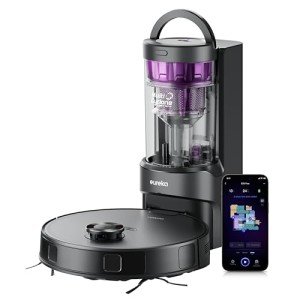The Rise of Robot Cleaners in Commercial Spaces
Introduction
In the last few years, developments in technology have triggered automation in various sectors, incorporating whatever from manufacturing to customer care. One notable evolution in this arena is the development of robot cleaners in commercial areas. These automated cleaning machines have actually changed the way services approach cleanliness and upkeep, supplying an option that is not just effective but also cost-effective. As business seek to boost their operational effectiveness while preserving high requirements of hygiene, robot cleaners have actually become an integral part of modern-day commercial environments.
Understanding Robot Cleaners
Robot cleaners are autonomous gadgets geared up with sensing units, electronic cameras, and expert system that allow them to browse and clean different surface areas without human intervention. They are available in various types and functionalities, dealing with diverse commercial requirements. Here's an introduction of the primary types of robot cleaners:
- Autonomous Vacuum Cleaners: These devices are created for efficiently vacuuming floorings, especially in environments such as workplaces, retail spaces, and warehouses.
- Scrubbing Robots: These robots are tailored for difficult surface areas, utilizing scrubbing and cleaning services to tackle tough stains and gunk.
- Disinfection Robots: Equipped with UV-C light or chemical sprayers, these robots focus on disinfecting areas, considerably lowering the presence of damaging germs and viruses.
Table 1: Types of Robot Cleaners and Their Features
| Kind Of Robot Cleaner | Primary Function | Perfect Environment | Key Features |
|---|---|---|---|
| Self-governing Vacuum Cleaner | Floor vacuuming | Offices, Retail Spaces | Sensing units for browsing obstacles, scheduling |
| Scrubbing Robot | Tough surface area cleaning | Storage facilities, Hospitals | Dual-brush system, adjustable settings |
| Disinfection Robot | Surface area disinfection | Healthcare settings | UV-C or electrostatic spraying technology |
Advantages of Using Robot Cleaners in Commercial Spaces
The integration of robot cleaners in commercial environments offers a myriad of advantages:
Increased Efficiency
Robot cleaners operate autonomously, permitting them to clean locations at any time of the day or night without the need for human supervision. This effectiveness is particularly helpful for large centers that experience high foot traffic, as these robots can cover more ground in less time.
Consistent Cleaning Quality
Robot cleaners are created to carry out regularly, running on pre-programmed settings customized to the particular needs of the environment. best buy robot vacuum makes sure a reputable requirement of cleanliness throughout the facility.
Cost-Effectiveness
While the preliminary financial investment in robot cleaners might be considerable, the long-lasting savings can be considerable. Robot cleaners reduce the need for a large cleaning staff, lessen human errors, and can decrease costs connected with cleaning supplies.
Improved Safety
In settings like healthcare facilities and laboratories, keeping health is vital. Robot cleaners minimize human contact with potentially dangerous products or areas, consequently enhancing overall security.
Eco-Friendliness
Many modern robot cleaners are developed with sustainability in mind. They effectively utilize water and cleaning items, often equipped with settings that lower waste. This contributes to a greener method to cleaning in commercial areas.
Key Considerations Before Implementation
While the benefits are significant, services need to think about different aspects before buying robot cleaners:
- Space Design: The design of the center can affect a robot's effectiveness. Areas with numerous barriers might require more innovative designs geared up with sophisticated navigation systems.
- Maintenance: Although robot cleaners are typically low-maintenance, they do require routine checks to make sure optimum efficiency. Having a devoted professional or service contract may be needed.
- Software Updates: The technology behind robot cleaners develops rapidly. Keeping the software as much as date is vital for maintaining performance and security.
- Integration with Current Systems: Understanding how robot cleaners can be incorporated into existing cleaning procedures is vital to optimizing their possible benefits.
Case Studies: Successful Implementation of Robot Cleaners
Case Study 1: A Large Retail Chain
A large retail chain carried out autonomous vacuum across its many shops. The robots allowed cleaning to happen during hours of operation, which significantly decreased labor expenses and improved general store tidiness. The chain reported a 25% increase in consumer fulfillment, directly attributing it to the improved shopping environment.
Case Study 2: A Local Hospital
A healthcare facility deployed disinfection robots to tackle intensive cleaning regimens, particularly in waiting locations and operating rooms. These robots efficiently reduced infection dangers while allowing cleaning staff to focus on other pushing tasks. The healthcare facility noted a marked decrease in post-surgical infection rates, validating the efficiency of robotic disinfection.
FAQs About Robot Cleaners in Commercial Spaces
Q1: Are robot cleaners appropriate for all commercial environments?
- A: While robot cleaners are versatile, their suitability might differ based upon space style and cleaning requirements. It is vital to assess the specific needs and layout of your commercial area.
Q2: How much do robot cleaners cost?
- A: The price of robot cleaners can range widely based on their functions and capabilities. Standard models might begin at ₤ 1,000, while advanced models can cost upwards of ₤ 10,000.
Q3: How frequently do robot cleaners require maintenance?
- A: Robot cleaners generally need minimal maintenance. Regular checks and software updates are recommended, while parts like filters may require replacing based on use.
Q4: Can robot cleaners work together with human personnel?
- A: Yes, robot cleaners are developed to match human personnel rather than replace them. They can take over routine cleaning jobs, allowing personnel to focus on more complex tasks.
The commercial cleaning landscape is witnessing a considerable improvement through using robot cleaners. These devices match human effort, improve cleanliness, and add to cost savings, making them a worthy financial investment for business looking to enhance their functional effectiveness. As technology continues to evolve, the capabilities of robot cleaners are likely to expand, further strengthening their role in preserving cleanliness in commercial areas. With cautious factor to consider of private needs and an innovative method, services can accept this innovation to create a cleaner, safer, and more effective workplace.

